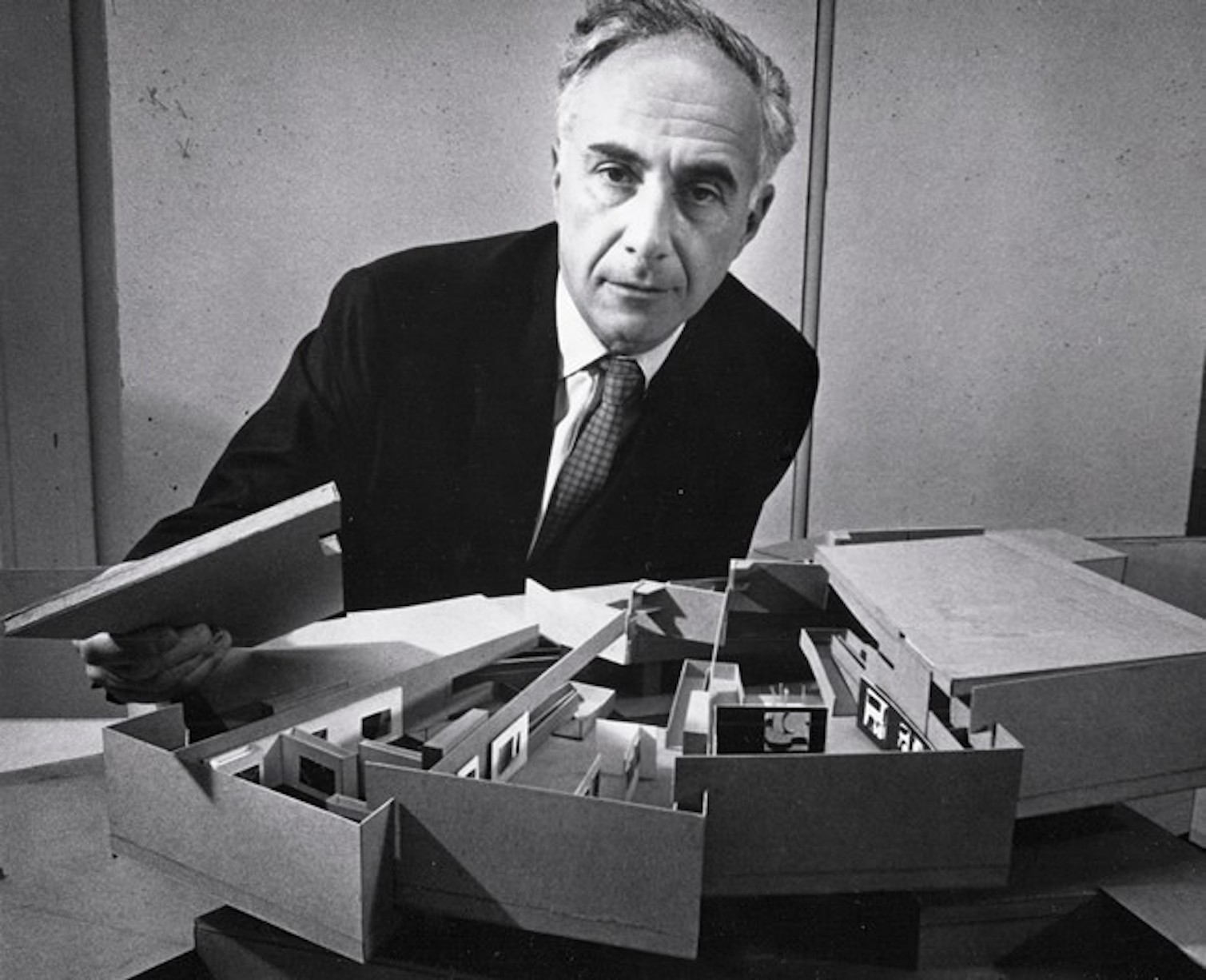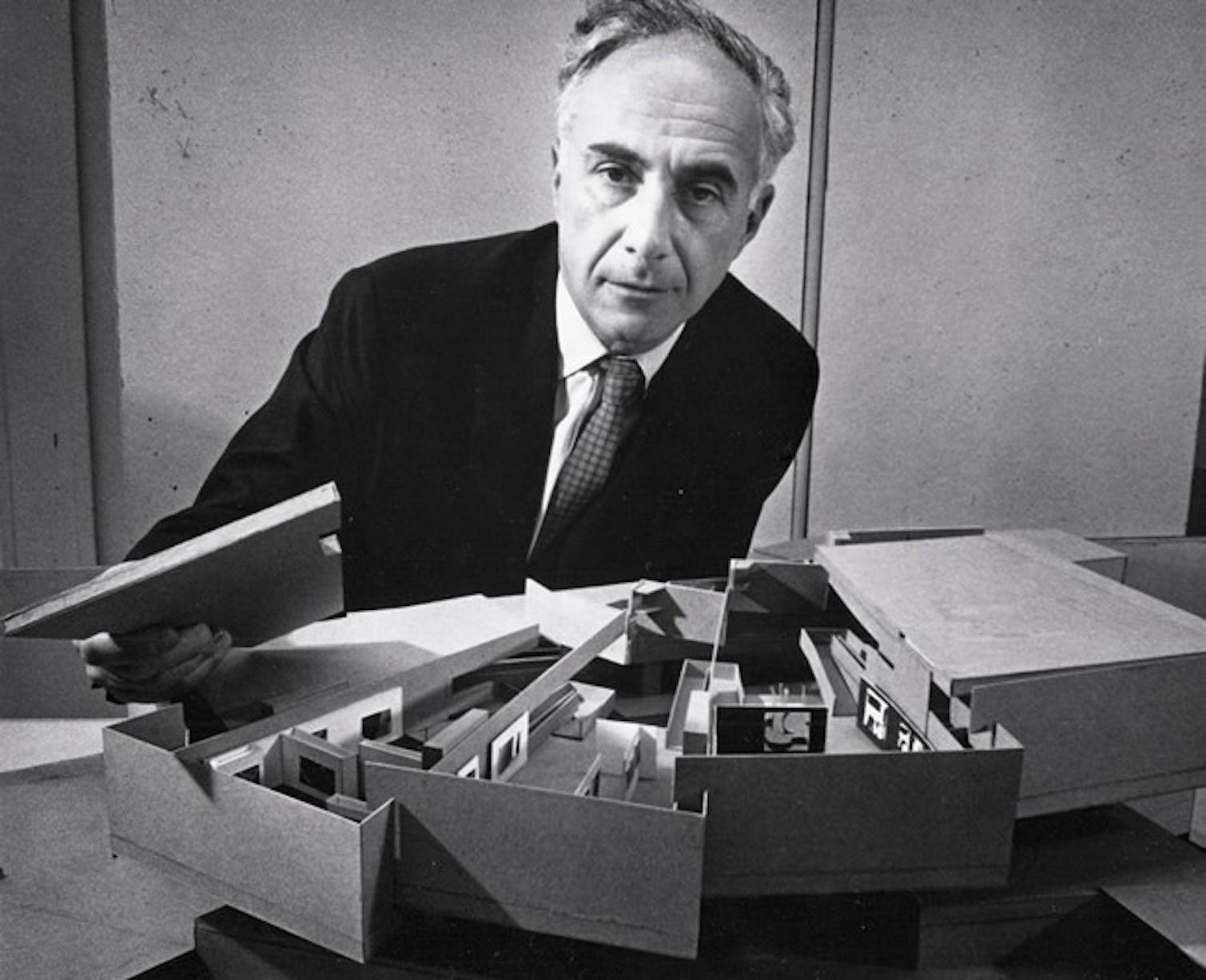[ad_1]

Peter Selz.
COURTESY BERKELEY ART MUSEUM AND PACIFIC FILM ARCHIVE
Peter Selz, whose enterprising curatorial vision helped shape the Berkeley Art Museum in California and the Museum of Modern Art in New York in the mid-20th century, died on Friday, according to the Berkeley Art Museum and Pacific Film Archives. He was 100.
Selz was an integral figure in the postwar art scene, curating milestone shows that were instrumental in writing certain artists into art history.
Perhaps his most important exhibition came in 1959, during his tenure as a curator of painting and sculpture at MoMA. That show was “New Images of Man,” a survey of how artists in mid-century America and Europe were representing humans in their work. The show broke with reigning curatorial consensus by showing work that tended toward figuration at a time when Abstract Expressionism was in vogue, and by predominantly featuring artists who were not based in New York, which at the time was believed by many Western critics to be the center of the art world.
“The revelations and complexities of mid-20th-century life have called forth a profound feeling of solitude and anxiety,” Selz said in a press statement accompanying the show. “The imagery of man which has evolved from this reveals sometimes a new dignity, sometimes despair, but always the uniqueness of man as he confronts his fate.” Among the artists whose work he believed possessed this sensibility were Jean Dubuffet, Francis Bacon, Willem de Kooning (whose figurative work was included, not his abstractions), Eduardo Paolozzi, and Alberto Giacometti. Most critics responded negatively, believing that the show was out of step with the times.
While at MoMA, where he worked from 1958 to 1964, Selz also organized Auguste Rodin’s first U.S. retrospective, a major survey of Futurist art, a Mark Rothko show, and a Giacometti retrospective.
One of his greatest achievements at MoMA was the commissioning of Jean Tinguely’s Homage to New York (1960). “I heard that he wanted to do this sculpture that destroys itself at the MoMA,” Selz told the Brooklyn Rail in 2011. “The museum was very uncomfortable and kept saying no, which may have been the correct attitude for the collections manager, but I was the curator of painting and sculpture and I thought it was a good idea.”
When it was shown in MoMA’s courtyard, Tinguely’s whirring sculpture, composed of scrapped metal parts collected from a junkyard, combusted. The fire department extinguished the smoking work, which has since come to be seen as one of the most important examples of kinetic art.
In 1965 Selz became the director of University of California’s Berkeley Art Museum, a newly formed institution whose claim to fame at the time was a prized collection of Hans Hofmann paintings donated by the artist. Under his direction, the museum would open its current Mario Ciampi–designed building, in 1970, and launch the Pacific Film Archive.
“Over the course of his tenure as our founding director, Peter transformed BAMPFA from a modest university art collection into the internationally renowned art and film institution it is today,” Lawrence Rinder, BAMPFA’s current director and chief curator, said in a statement. “Generations of Bay Area art lovers have benefited from his insight, knowledge, independence, and boundless energy, and his legacy will reverberate across and beyond our museum for decades to come.”
Under Selz, the museum became a locus of activity in the California scene. Two years after taking the reins at the museum, he curated “Funk!,” which collected Bay Area artists whose work often featured cartoonish forms and vernacular imagery. Now known as funk art, the style highlighted by the show represented a riposte to the seriousness and aesthetic dogma of movements like Minimalism and Conceptualism.
While organizing the show, Selz circulated a questionnaire to artists that included questions like “Do you know or care what funk is?” and “What is the funkiest thing you can think of?” The work—by artists such as Robert Arneson, Peter Voulkos, Joan Brown, and Bruce Conner—exhibited a youthful, anti-establishment élan, and would go on to become influential in California and far beyond. (Some of the artists were so non-conformist, in fact, that they publicly quibbled with Selz’s thesis; Conner adamantly denied that funk art existed.)
“Funk art has asserted itself strongly in Northern California,” Selz wrote in his essay “Notes on Funk.” “To be sure, the international art magazines are filled with idiosyncratic, sensuous, irrational, amoral, organic, visceral, and three-dimensional objects. They seem to turn up everywhere. Still, there is a heavy concentration of such objects in the San Francisco area. It is here that Funk sprouted and grew.”
For the Berkeley Art Museum, where he worked until 1973, Selz also organized “New Directions in Kinetic Sculpture,” one of the few surveys of its kind to be held in the U.S. during that time, and a show of work by René Magritte. After he leaving his post as director, he became a professor at UC Berkeley.
Selz’s post-BAMPFA pursuits included serving as the project director for the Christo and Jeanne-Claude piece Running Fence (1972–76), for which the artists stretched 24.5 miles worth of nylon fabric through the counties of Marin and Sonoma in Northern California. The work is now considered one of Christo and Jeanne-Claude’s most important projects. He also served as a West Coast correspondent for Art in America.
Peter Selz was born in Munich, Germany, in 1919, to Jewish parents. He fled the country in 1936 amid the rise of the Nazi regime, and he went on to pursue a career in the U.S. He settled in New York, and served in the U.S. military during World War II, after which he studied at the Sorbonne and the École du Louvre.
In 2012 Paul J. Karlstrom published a biography of Selz called Peter Selz: Sketches of a Life in Art. The book offered an occasion for Selz and others to reflect on his legacy as a historian and curator. Asked by the Rail what he thought his role within the art world had been, Selz responded, “I was always interested in things that I thought were excellent but that other people didn’t really pay attention to.”
[ad_2]
Source link

